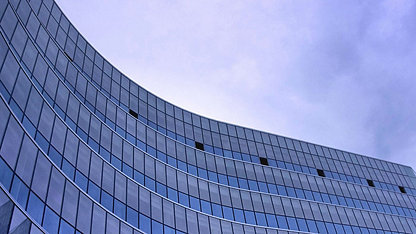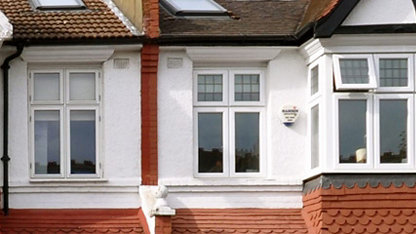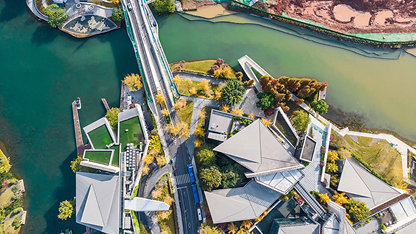As the commercial property sector continues to come to grips with the profound socio-economic impact of COVID-19, professionals are naturally looking ahead to see what trends have been accelerated and how this will impact future use of and demand for buildings.
The rise of remote working, e-commerce and the implications for offices and retail are clearly prominent structural changes that are already affecting organisation’s and businesses’ property strategies and plans around their physical footprints. However, as we look ahead to an eventual recovery, these are not the only pre-COVID trends that have been accelerated. Sustainability has come to the fore, as governments, investors and built environment stakeholders, consider how to build back better, and indeed, what we value in our buildings.
Indeed, in RICS’ latest Global Commercial Property Monitor, we took an in-depth look at commercial property professionals’ perceptions of how demand for sustainable buildings is evolving.
Occupier and investor demand for sustainably buildings grows
Whether we look at investors or occupiers, it is clear that demand for more sustainable building is climbing. Globally, almost 40% of professionals believe that occupier demand for buildings with Green Building Certifications has risen modestly in the past year. This share is slightly higher in Europe, with around 43% of contributors noting a modest increase, whilst APAC appears to be leading the way with more than 50% of respondents across the region seeing a rise.
Across the investor side of the market, around 47% of the survey’s contributors globally see investor demand for green buildings to have risen in the past twelve months, although an equal share notes no change. Still, across Europe and APAC, more than half of the participants note an increase in interest for buildings with green certifications. The share of contributors taking this view is the lowest across the Americas, as around one third of participants report a rise in investor appetite for green buildings in the last twelve months while more than 50% believe there has been no change.
“Measurement, therefore, will be crucial to encouraging greater capital into more sustainable buildings. To help pioneer better spaces work in, we need to help ensure decisions are no longer based solely on cost, compliance and function, but assess a broader value of a building ”
Paul Bagust
Global Property Standards Director, RICS
A premium for green: valuing sustainable buildings
The increased value placed on sustainability is apparent from the premiums greener buildings seem to secure. Globally, around 35% of contributors believe that green buildings receive a rent premium over comparable non-green buildings. The majority state that the rent premium is up to 10%. Meanwhile, almost 40% state that even if there is no rent premium for a green building, those without a green certification are subject to a brown discount.
Meanwhile, 42% of survey participants globally state that green certified buildings attain a price premium over comparable non-green buildings. Similar to the occupier side of the market, the majority state the price premium is up to 10%.
But while demand for greener buildings is clearly growing, it is doing so at a steady pace. And for investors, it is not the key deciding factor. For instance, two-thirds of contributors believed that while investors have expressed interest in the ESG-related factors, the underlying decisions were still based on traditional cost matters.
Measuring success: looking beyond cost
Measurement, therefore, will be crucial to encouraging greater capital into more sustainable buildings. To help pioneer better spaces work in, we need to help ensure decisions are no longer based solely on cost, compliance and function, but assess a broader value of a building. To do so, we need to improve how we track the performance of buildings. This will help build an investment case for key elements such as sustainability.
The question, then, is how do we measure the successful performance of buildings? How can professionals assess how environmentally friendly a building is, or that it is effectively serving the changed needs of a its occupier, or delivering a broader return on investment?
The answer is data. With the scale of technological innovation that has taken place, buildings produce vast amounts of data that can be used to report on its performance – environmental or otherwise. However, this data must be centred on the experience of its users, embed sustainability metrics, and be comparable with other benchmarks to allow informed strategic, decision-making. That’s why RICS is committed to working with stakeholders from all sectors – occupiers, FM, investors and valuers – to develop a new, global, data-led standard for operating buildings.
While the future is far from certain, and COVD-19 continues to cloud the horizon for commercial real estate, it has been a catalyst for change. Even when the healthcare crisis is over, there can be no going back to the ‘old’ normal for commercial real estate. It will be up to our profession to shape its recovery and make the case for positive change as we build back better.
About the author

Paul Bagust
Head of Property Standards, RICS
Paul is an experienced member of the department and has delivered many high quality projects and products including the Small Business Lease and Occupier Satisfaction Survey. He has responsibility for the Facilities Management, Management Consultancy, Public Sector, Auctioneering groups and general Commercial Property matters. Paul has specific responsibility for the development of professional guidance, pathways to membership of RICS and member engagement.















